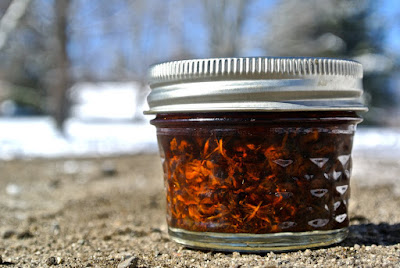Willow Bark: The Homesteader's Aspirin
Last week, I was out collecting willows for basket making and realized that I was getting a two for one deal! In the process, I was also harvesting large amounts of willow bark.

Willow bark has been used as a pain reliever for thousands of years as it contains salicin, which is similar to the active ingredient in aspirin that helps you get rid of headaches, cramps, and sore backs called acetylsalicylic acid. Unlike aspirin, though willow bark also contains flavonoids, which are anti-inflammatory, treating the root of the pain. Some also believe that willow bark can reduce fever and boost the immune system.
For more information on the science behind why willow bark works the way it does click HERE.
White willow bark is the most commonly used willow, as it has a high salicin content, but any willow will work. Remember that each species have varying amounts of salicin. An easy way to test the salicin content of a particular willow is to chew on a piece of the bark for a moment. The more bitter, the more potent.
When harvesting willow, cut the entire branch. This is the easiest way to do it and it actually helps the willow to grow. If you remove the bark from a branch but leave it attached, the branch may die and that will be it. But if you cut the entire stem, it will coppice and many more branches will grow in its place. Basket makers will cut willows like this on purpose so that many long, thin, straight stems grow back.

After you've cut your willow stems, shave off the bark with either a knife or a sharp rock. I prefer to use the rock method because it shaves it off really nicely, giving you just the bark and none of the wood. It also crumples it into very small pieces that are easier to use later. It is fine to use a metal knife but be careful not to cut into the wood. It won't do any harm but you will have a lot of useless wood taking up space floating around in your tea or tincture.
To dry, simply spread it out in a thin layer and leave it for a couple of days, it will dry quickly and easily.

To make a tincture simply cover with at least 80 proof alcohol and leave in a sunny place for a month or more, shaking daily. Once 4 weeks is over, strain out the bark and store in cool, dark place in a brown bottle.
To make a tea, simply boil for ten minutes, then let it steep until it is cool enough to drink. It is very bitter so I would suggest adding a lot of honey.
I have found that willow bark takes longer to kick in than aspirin but that its effects last longer.
Willow bark has many of the same side effects as aspirin does. Do not take it with blood thinners or 2 weeks before surgery. Do not take it if pregnant or nursing. Do not give willow bark to children under the age of 18. Do not combine with aspirin. Do not take for extended periods of time, it can cause kidney damage. Do not take if you are sensitive to aspirin. Discontinue use at the first sign of negative side effects. Consult your physician before using willow bark.
Dont have any willow growing near you? No problem! You can purchase it here:
Click Here To Purchase White Willow Bark From Mountain Rose Herbs





